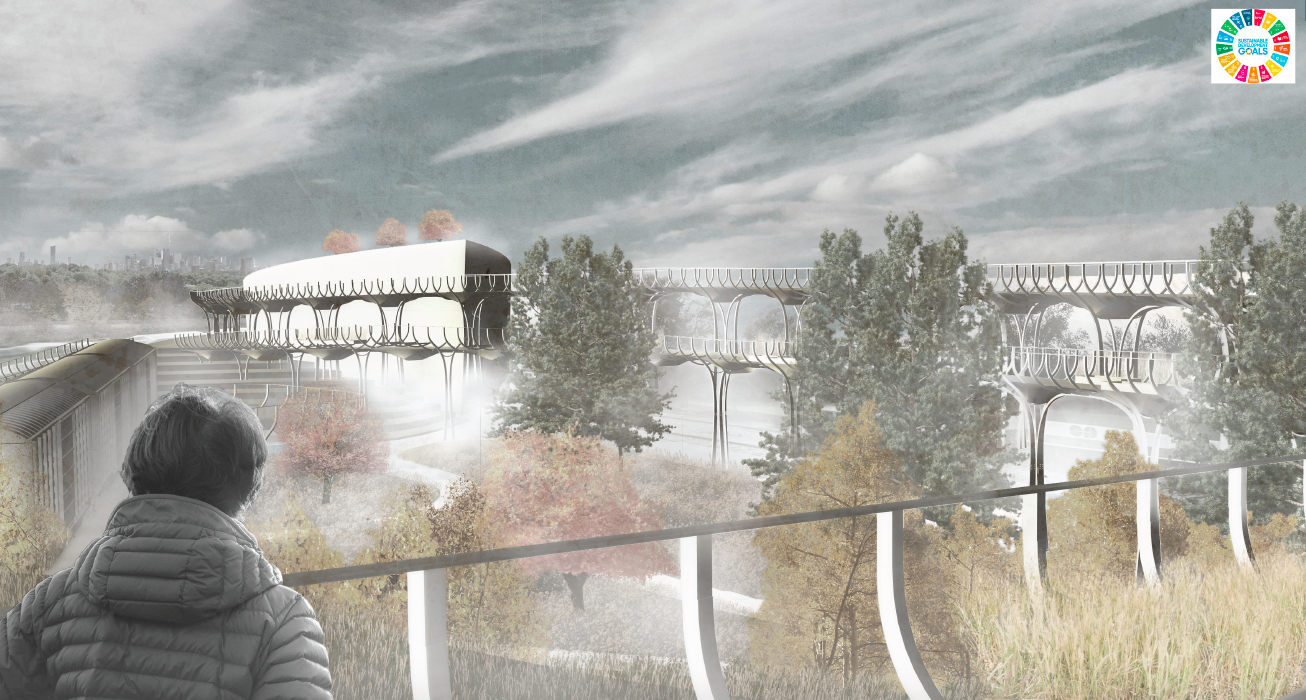
Perspective Park
Master of Landscape Architecture Comprehensive Design Studio
University of Toronto
Mainstream messaging around climate change focuses on reducing the emissions of greenhouse gases such as CO. The automobile is a major contributor of CO, and many individuals are doing their part by cycling instead of driving. Yet, the infrastructure in many North American cities has not kept pace with the rise of cycling’s popularity. Cyclists are forced to either risk mixing with the vehicular tra‑c, or overrun routes through parks and mixed-use trails. Our design makes use of remnant space found next to a rail line by employing a series of elevated and ground-level paths to provide both a dedicated cycle track for commuters and a park for pedestrians. The paths incorporate green-roof systems for vegetation, benches for resting, and twist through the site to maintain a grade less than 5%. This configuration allows cyclists to travel at speed, while the pedestrian wanders safely through the canopy above. However, by designing with wood-based materials these structures would do more than just encourage cycling, they remove CO from the air. Not only does wood take less energy to produce, thus emitting less greenhouse gases, it also sequesters CO. Based on an estimate of material volume, our design would produce a volume of CO equivalent to that emitted by 2,695 cars and 969 cars in a year if made from steel or concrete respectively. Instead, the wood in our design would remove the same amount of COv that 398 cars would produce in a year.
